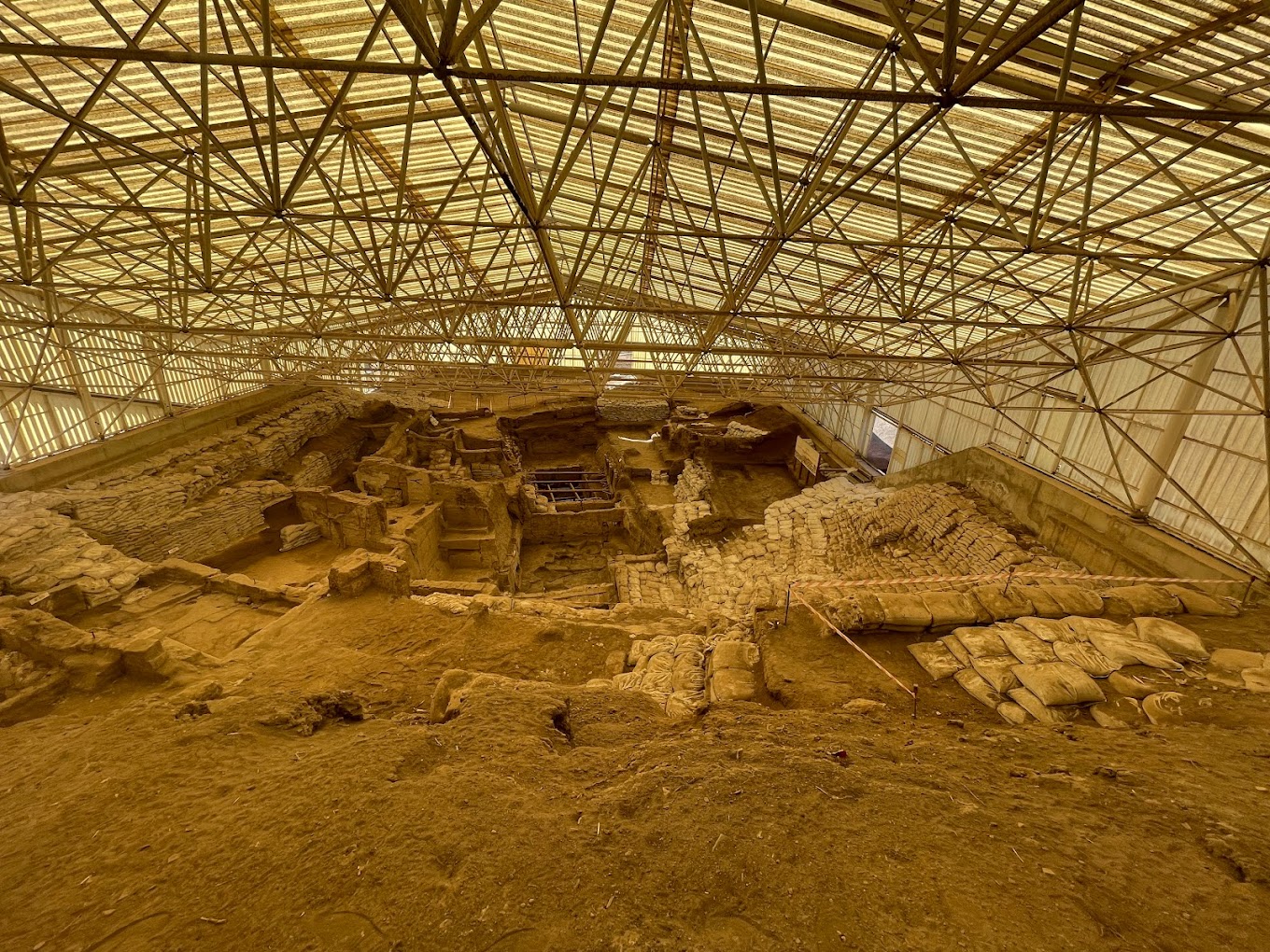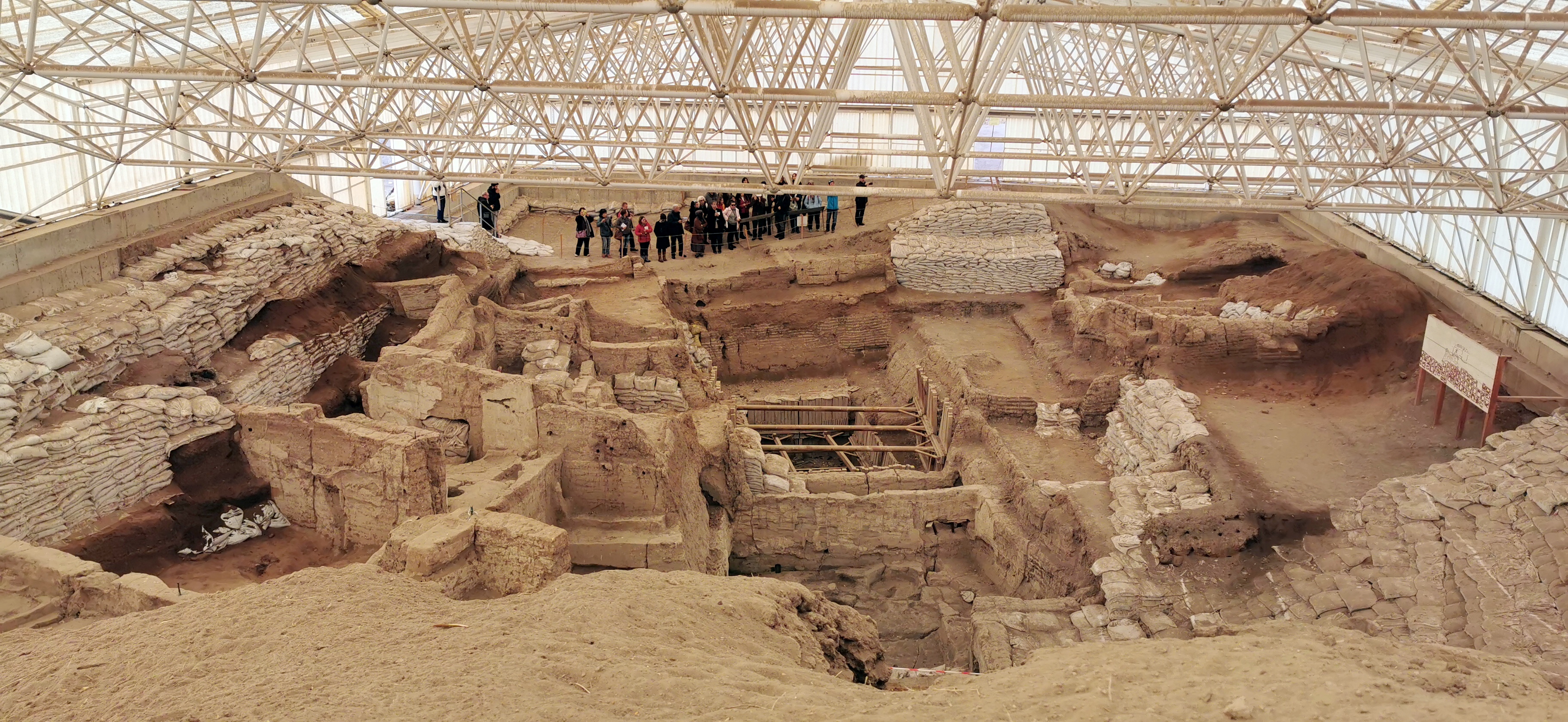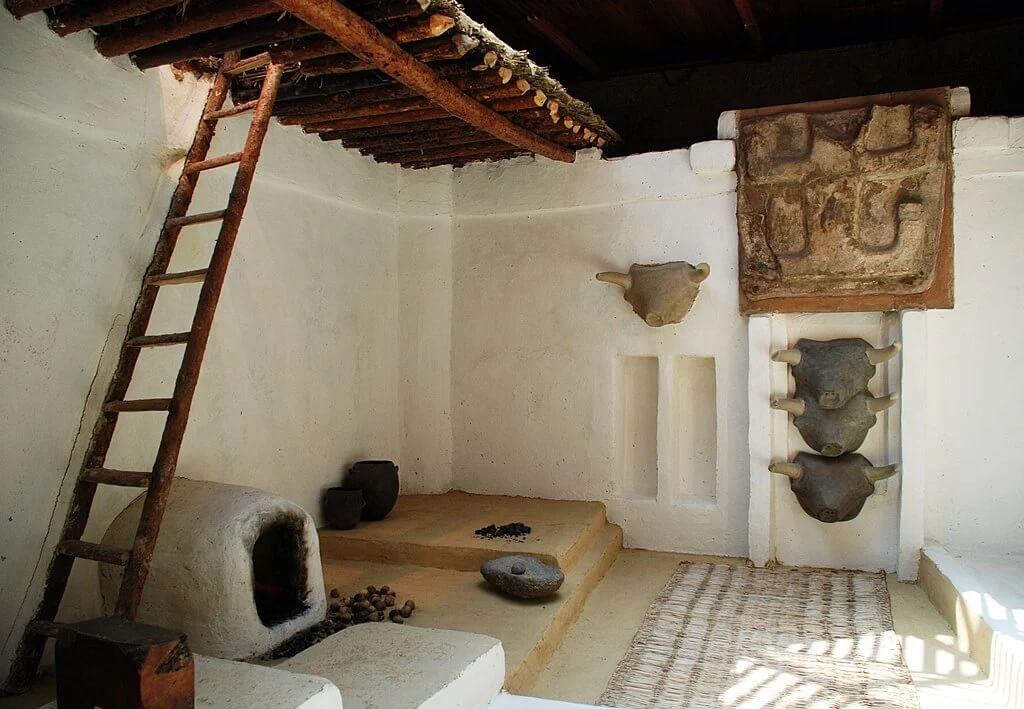Have you ever imagined living in a city with no streets? Walking on rooftops instead of using a door to visit your neighbor? Or that your beloved ancestors rest peacefully just beneath the floor you sleep on every day? While it might sound like something out of a science fiction movie, these scenes were daily realities 9,000 years ago in the heart of Anatolia, on the Konya Plain. Welcome to Çatalhöyük, one of the first metropolises in human history!
This is not just an archaeological site of stone and soil; it's a living history book that witnessed the most exciting moments of the transition from hunter-gatherer societies to settled life, from village to city. In this guide, you will find every detail you need to add to the top of your list ofthings to do in Çatalhöyük when visiting this unique treasure of Konya. We are here to take you on an unforgettable journey through time. Fasten your seatbelts, because we are heading to the Neolithic Age!
Explore one of the oldest urban settlements on the UNESCO World Heritage list
To understand how special every step you take in Çatalhöyük is, you need to know what this place means not just for us, but for all of humanity. It is far more than a local treasure; it is a World Heritage site, certified by UNESCO in 2012 for its outstanding universal value. But why? What earned it this title?
The answer lies in the revolutionary moment in human history that Çatalhöyük represents. This is the clearest picture of that critical threshold when people transitioned from small villages over thousands of years to a complex urban life based on egalitarian principles. Archaeologists have uncovered 18 successive settlement layers here, meaning this city was constantly reborn, developed, and changed for about 1,400 years.
What's even more impressive is how the city's architecture reflects the spirit of the society of that time. There are no palaces, monumental temples, or massive structures belonging to a ruling class here. This city plan, consisting of interconnected houses of similar size without streets, is evidence of a way of life based on community and solidarity, not hierarchy. In other words, the architecture of Çatalhöyük is not just a design choice, but a social manifesto from 9,000 years ago. This universal importance makes Çatalhöyük an indispensable stop among the historical and cultural riches of Konya.

See the excavation areas and the interconnected Neolithic houses
As you walk from the visitor center to the excavation areas under the massive protective roofs, you will suddenly find yourself in a completely different world. The labyrinth of mud-brick wall foundations stretching before you might seem a bit confusing at first. But stop and imagine: the ground you are standing on was once a bustling city where thousands of people lived. And the most mind-boggling feature of this city was its lack of streets!
Yes, you heard that right. In Çatalhöyük, transportation was provided over the flat roofs of the houses. People entered their homes through a hole in the roof via a wooden ladder. The roofs were like today's streets, squares, and parks; they were social spaces where neighbors chatted, children played, and daily chores were done. This incredible city plan was part of a system built on trust and cooperation that bound the community together.
So, what was life like inside these houses? Made entirely from natural materials like mud-brick, wood, and reeds, these houses had a surprisingly complex interior layout. They usually consisted of a main room and smaller adjacent storage rooms. On the south wall of the main room, there was a hearth located directly under the entrance from the ceiling. The walls and floors were repeatedly plastered with a lime-based white clay, which shows how much importance they placed on cleanliness.
But it wasn't just the architecture that made these houses special. The walls were like an art gallery. Hunting scenes in shades of red and black, geometric patterns, leopard figures, and even what is thought to be the world's first landscape painting, depicting the eruption of the nearby Mount Hasan... Art was an integral part of life. The reliefs made by plastering real bull heads and ram horns into the walls whisper how rich the belief world of the people of that time was.
Perhaps their most striking and poignant tradition was how they buried their dead. In Çatalhöyük, people buried their loved ones under the platforms inside their homes, in the fetal position. This means life and death were, in the truest sense of the word, intertwined under the same roof. This practice shows their deep respect for their ancestors and their belief that family ties were not broken even by death. Remember that when you tour a house, you are not just looking at a shelter, but also a shrine and a family cemetery.

Step into the replica house and imagine life in that era
After seeing the foundations and wall remains in the excavation area, a question will likely pop into your mind: So, what did these houses actually look like? The answer to this question can be found at one of the most exciting stops at the site: the Replica House (or Experimental House). This structure, built as an exact replica by archaeologists based on information from the excavations, serves as a bridge that closes a 9,000-year time gap.
When you step in from the bright Konya sun, you are greeted by a cool, dim atmosphere. As your eyes adjust, you will notice how the light filtering through a single opening in the ceiling illuminates the interior. This beam of light was not just a source of illumination but also a sun clock. Research has revealed that this light moved across the interior of the house throughout the day and year, indicating the time, and perhaps even marking the locations of the graves under the floor at specific times. This is an awe-inspiring testament to how subtly the Neolithic people understood nature and astronomy and incorporated it into their architecture.
As you walk inside, touch the texture of the white plaster on the walls. Examine the geometric patterns and animal figures drawn with red ochre up close. See how cleverly the hearth was placed directly under the ceiling entrance to allow smoke to escape easily. Step onto the raised platforms where the family slept, ate, and did their crafts. At that very moment, it will be much easier to imagine the life of a Neolithic family living with their ancestors buried beneath those platforms.
This house is also a scientific laboratory. The construction process gave archaeologists the opportunity to understand the building techniques of the period, the challenges of using mud-brick material, and the practical aspects of life 9,000 years ago. This incredible engineering and social structure in Çatalhöyük places it in a very special position on the list of(http://www.yerelrehber.com/tr/turkiye-antik-kentler).

While You're Here...
After completing a 9,000-year adventure in Çatalhöyük, it would be a shame not to explore the other wonders Konya has to offer. After a prehistoric journey, you can turn your route to the city's more recent history.
Mevlana Museum: The spiritual heart of Konya, this museum and mausoleum will transport you to a completely different atmosphere. You can add a spiritual touch to your trip by visiting this peaceful place filled with the teachings of Mevlana Celaleddin-i Rumi.
Sille Village: Very close to the city center, this historic Greek village, reminiscent of Cappadocia, will enchant you with its stone houses, charming cafes by the stream, and chapels carved into the rocks. Be sure to see the historic Aya Eleni Church.
Konya Tropical Butterfly Garden: If you want to take a short break from history and be in nature, this garden, which has the largest butterfly flight area in Europe, is a great option. A tropical paradise where thousands of colorful butterflies fly around you awaits.
Frequently Asked Questions (FAQ)
How to get to Çatalhöyük? Çatalhöyük is located about 45-50 km from the Konya city center. You can easily reach it in about 50 minutes by private car, following the road to Çumra. There is a free parking lot at the entrance of the archaeological site. If you prefer public transport, you can take the regular minibuses from Konya to Çumra or use the Konya-Karaman train line, and then take a short taxi ride from the Çumra town center to the site.
What are the entrance fees and visiting hours for Çatalhöyük? One of the best things about visiting Çatalhöyük is that admission is free. As it is affiliated with the Ministry of Culture and Tourism, the Müzekart (Museum Card) is also valid. Visiting hours vary by season.
| Category | Summer Season (April 1 - October 31) | Winter Season (October 31 - April 1) |
|---|---|---|
| Opening / Closing Time | 09:00 - 19:00 | 09:00 - 17:00 |
| Ticket Office Closing Time | 18:40 | 16:40 |
| Entrance Fee | Free (Müzekart is valid) | Free (Müzekart is valid) |
| Closing Day | None (Open every day) | None (Open every day) |
How long does a visit to Çatalhöyük take? We recommend setting aside at least 2-3 hours to properly explore the excavation areas, the exhibition in the visitor center, and the replica house. If you have a special interest in archaeology and history, you might want to spend more time in this unique atmosphere.
Bibliography: If you wish to gain more in-depth academic knowledge about this fascinating prehistoric settlement, review current excavation reports, and learn the details of the project, you can visit the official website of the international research team, the Çatalhöyük Research Project: http://www.catalhoyuk.com.


 English
English Türkçe
Türkçe